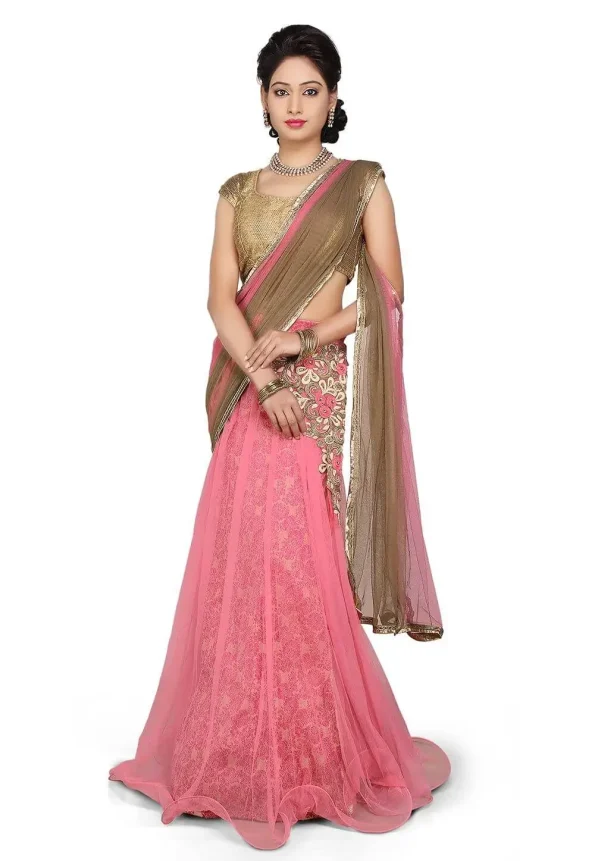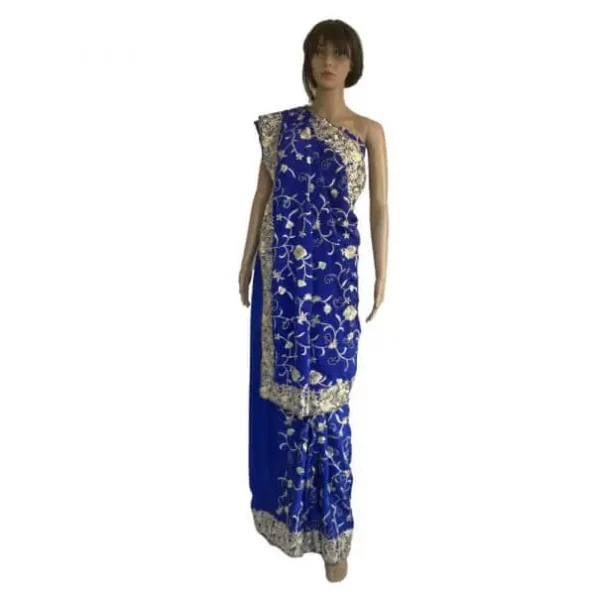Sarees are traditional Indian garments that captivate women all over the world. Every new trend has an impact on individuals. Therefore, change is constant in the fashion sector. However, one garment has survived the years and continues to do so: the saree. Sarees are timeless garments that properly depict women’s elegance.
With the diverse types of sarees available in India, numerous methods exist to drape the garment, making each look distinct and unique. While there are numerous conventional forms of draping a sari, there are also a few current ways with a little twist to give the old classic styles a new avatar.
Let’s Have A Tour Of Diverse Saree Draping Styles
Atpoure Saree:
The Bengali Atpoure saree is one of the most distinctive saree-draping designs. This classic Bengali saree is white with a red border. The front is folded with box pleats, and the pallu (veil) is visible on both shoulders. The veil emerges from the rear of the left shoulder first, followed by the back of the right shoulder. Bengali ladies attach a bunch of keys to the end of the veil from over the right shoulder; this denotes a powerful woman who demanded respect and honor.

Lehenga Saree:
The lehenga saree, as versatile as it is, can be wrapped as a lehenga choli saree to give you a vibrant, regal queen look. Allow the odhni, or pallu, of the clothing while doing lehenga saree draping to fall from one end of the shoulder back to the other, and fasten it into the waistline to keep it from falling out. Use a saree pin at the shoulder and waist to secure the pallu. Finish the style with a top knot or a bun for an attractive look.
Seedha Pallu:
Seedha pallu sarees, a draping style used in Uttar Pradesh, Gujarat, and Odisha, are popular among local women. In this form, the veil replaces the dupatta, as it does in a lehenga choli. This design allows for free hand movements and is ideal for heavy-work sarees because the shoulders do not have to carry the weight of the veil’s heavily worked ornamentation. It’s also the finest method to show off the beautiful designs on the saree’s veil and border. This is one of the saree draping styles that are perfect for bridal saree draping.
Parsi Saree:

As the name implies, Parsi women wear this draping style regularly and on special occasions. A georgette or lightweight chiffon saree is usually preferred for this drape. The veil comes from behind and runs across the blouse on the left shoulder before being brought to the forefront over the right shoulder, generating folds. As a result, the front half of the veil is fairly close to the hem.
Nauvari saree:

There is a unique way of draping a saree in Maharashtra known as nauvari (nine-yard saree). It is worn as a dhoti (loincloth), with one end traveling front to back between the legs and tucked around the waist and the other end, or upper section, draped much like a regular saree. The Maharashtra folk dance, Lavani, best exemplifies this nauvari saree-draping form. This style not only makes ladies look lovely, but it also allows for effortless leg movement. Usually, Maharashtrian bridal saree draping is done in this style.
Winding Up
Envi salon offers sari draping services at the most budget-friendly charges. Choose your style of Sari and we will help you don it in the best way to add to your glam quotient.



